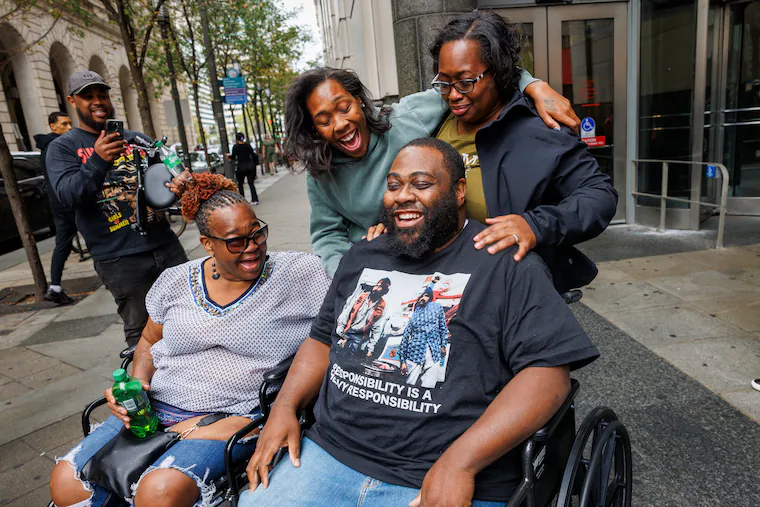By Bronwyn Herbert
Copyright abc

Bella Rogers fell into carpentry a decade ago when her uncle called to find out if any of the boys in her year would be interested in an apprenticeship with his Canberra-based building company.
Ms Rogers, then aged 19, had accepted a place at university to study fine arts, but decided to take a gamble.
“I didn’t want to study … and this was a chance for a different aspect of creativity. I thought, ‘well why not ask if I can give it a try?’,” she said.
With the support of her uncle and cousin, Ms Rogers completed her apprenticeship at TAFE where she was the only woman among 500 carpentry applicants and the first female in the course to graduate in eight years.
Ms Rogers, who has now had eight years in the industry, said the culture was “still way behind”.
“I have had a stalker … just workers overstepping the line.
“There is way more stuff that is still going on and happening to either young people coming in or older women who have been in the industry for years.”
‘Career-breakers’
Despite the pioneering steps taken by women like Ms Rogers, new research from the University of Sydney Business School — commissioned by the National Association of Women in Construction — showed there were significant workplace culture issues that prevented women from staying in the job.
Lead researcher, Natalie Galea, said pregnancy and parental leave had also been “career-breaking” for many women, particularly those in frontline trades and especially if they were working for small to medium-sized businesses or sole traders, which represent most employers in the construction sector.
“They were not given any guidance on their role adjustment. They were routinely left to work it out for themselves,” she said.
Ms Rogers unexpectedly fell pregnant about nine months into a salaried role with a high-end residential company on the Sunshine Coast.
“I was only able to work until 23 weeks pregnant and then it just physically was too painful,” she said.
“I couldn’t bend over, and I actually had to go to my doctor to get a letter to say to my employer, ‘if you do not remove this woman from site she is going to either terminate her pregnancy accidentally due to exertion or she will hurt herself significantly’.
“It actually took an outside person to really push them to move me into an office role and long term it benefited the company, but they were able to financially do that within the company, which not many others can do.”
With long hours expected in the sector, “presenteeism” — working while injured or unwell — was an expectation that did not align with modern workplaces or childcare, Dr Galea said.
“We also found that women are modifying their reproductive decisions to fit the job. They are delaying childbirth. They’re working up until the moment of birth and then often returning early to the site to look after the project,” she said.
The research highlighted several contributing factors including inflexible work conditions such as long hours and expectations of total availability, a lack of appropriate support for pregnant workers (such as suitable PPE or guidance on role adjustments), and the persistent issue of inadequate on-site amenities such as female-only toilets.
The report suggested structural changes to address these issues, including mandating flexible work arrangements, extending paid parental leave, and implementing an industry levy to fund pregnancy and parental leave for workers in small businesses, modelled on the construction industry’s existing portable long service leave scheme.
Ms Rogers said she was a big advocate for a government-led portable leave scheme that would not leave employers broke.
“You are talking about potentially 15 to 20 weeks of leave before the baby’s even born,” she said.
“It’s a lot to expect an employer in a small business to be able to fund someone who physically can’t be there to do the work.”
‘Got to be more sophisticated’
Attracting more women to the residential construction sector has been identified as one of the critical ways to get enough workers to meet the federal government’s goal of building 1.2 million new homes by 2029.
Last week, the federal government-run jobs and skills council, BuildSkills Australia, called for “targeted action” to recruit an additional 116,000 workers in residential construction, which included a pathway for an extra 51,000 women.
That figure would match the manufacturing sector’s female participation.
BuildSkills chief executive, Brett Schimming, said the report included targeted apprentice incentives and initiatives to attract mid-career women.
Women were 30 per cent more likely than men to leave the industry due to workplace culture, limited career progression opportunities, and inflexible working conditions, according to the BuildSkills report.
Jocelyn Martin, managing director of Housing Industry Australia (HIA) — the peak body for residential construction and home building — said attracting and retaining women was fundamental to addressing the “dire” workforce shortages.
“The industry has to recognise that if we’re only attracting 50 per cent of the population, then we are always going to have skill shortages,” she said.
“We have got to be more sophisticated in how we actually support women in the workforce.
Denita Wawn, chief executive of peak industry body Master Builders Australia, said BuildSkills’ projected need for additional workers was consistent with her group’s own forecasts.
She said the number of trade-qualified women only increased from 2 per cent to 4 per cent in the past decade — something she called “simply unacceptable” given the low base.
Ms Wawn said the industry needed to adopt better HR practices, including more flexible employment approaches, even for frontline trades, to make it more family-friendly.
“We know we don’t necessarily have to start at 7am. Can you stagger your workforce coming in onto site for example, can we look at job sharing? These are the type of things that we need to address,” she said.



